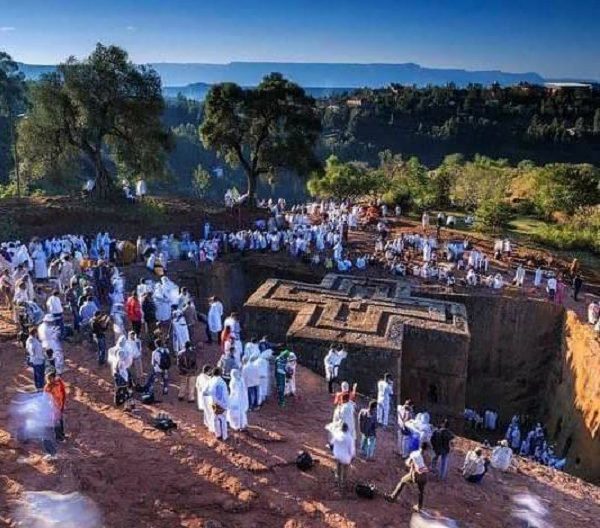
BY SEMIRA BERHE
When people get tired and want to refresh their mind they prefer to have a wonderful time with their families or alone in remote areas, historic places, monasteries or any other places where their soul can be refreshed with the new experience at a new place. In this regard, for most travels or tourists, Ethiopia is their preference. Indeed, Ethiopia is a history lover’s paradise of classic history and religious travels, tribes and cultures and geographical wonder.
The Rock-hewn churches of Lalibela are among the most magnificent tourist attraction sites in Ethiopia. The city got the name Lalibela after the King Lalibela of the Zagwe Dynasty, who reigned in the 12th century. Historical sources indicated that the king wanted to build these rock-hewn churches after he was inspired by the churches he saw in the Holy City- Jerusalem-where he stayed for 13 years. He then decided to build these churches as representation of the Holy city in Africa.
The churches that are carved out from one rock into 11 medieval monolithic churches until today are a place of pilgrimage and devotion among followers of the Ethiopian Orthodox Church. In addition to orthodox Christians, many Ethiopians and foreigners visit this area. UNESCO registered this historical place in 1978 as a world heritage site, along with the other heritage sites in Ethiopia.
Among the 11 Churches of labella “Biete Giorgis” is the most known church among visitors. One of the unique qualities of this church is that it is found a little isolated from the others and shown at the highest place in a cross shape.
Historical sources indicated that it takes 12 years to finish building the entire church, and unlike every other building in the world, its structure starts from the ground up, but Saint Lalibela did it from the top down.
The 11 rock hewn churches of Lalibela are categorized into two main groups based on their relative location to the nearby river. The Churches that lie to the north of the river are Biete Medhanialem (House of Holy Savior), the largest of all, Biete Mariam (House of Mary), Biete Denagele (House of Virgins), Biete Gologotha Mikael (House of Gologotha Michael). To the south of the river, Biete Amanuel (House of Emmanuel), Biete Qeddus Mercoreus (House of St. Mercoreos), Biete Abba Libanos (House of Abba Libanos), Biete Gabriel Raphael (House of Gabriel Raphael), House of Libanos (House of Libanos). The eleventh church, Biete Ghiorgis (House of St. George), is isolated from the others but connected by system trenches until now. All the rock-hewn churches are still preserved in their natural setting.
It has many historical places that inspire visitors to visit and be present at the special Christmas day in the church at Lalibela. At the religious celebration “Beza Kullu,” the priests announce that the Holy Savior (one of the name variants of Jesus Christ) was born in the morning and that same day was the birthday of King Lalibela.
As indicated by Lalibela town Deputy Mayor, Deacon Addise Demisse, for this Christmas celebration more than 1.8 million guests are expected to attend the special program that will be held at Lalibela. Tourism is one of the basic means of generating a town’s income. In this regard, the church is one of the major sources of income from tourism and plays a big role in the development of the city. He said, before the outbreak of Corona pandemic and the conflict over 39 thousand tourists visited the Rock-Hewn Church and was able to generate 260 million Birr income.
Speaking to the Ethiopian Press Agency (EPA), Deputy Mayor and head of town’s tourism office Deacon Addise Demisse, said currently, several committees are formed to facilitate the peaceful celebration of Christmas in Lalibela. He said the committees are ready to receive their guests and prepared different services for the comfort of tourists. What is more, qualified tour guides are prepared for foreign tourists who are expected the celebration.
Besides, over 45 hotels have been ready to provide accommodation for the tourists; organized work forces that are in charge of controlling illegal merchants, who may try to reap unfair profit from tourists are also organized. Besides its religious and societal value, the celebration had a huge contribution to the city’s economy as well as stimulating tourism. According to him, it is expected to generate 141 million birr from this year’s celebration.
The Ethiopian Herald January 3/2023





